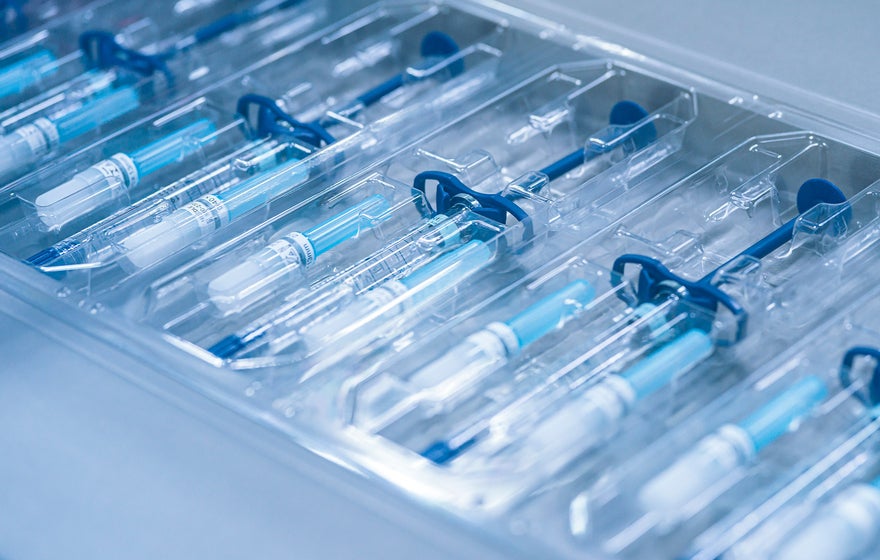
Hyaluronic acid fillers – how are they made?
Although hyaluronic acid fillers have become a common aesthetic treatment, not many of us know how they are made, or what happens with the filler gel once it has been injected into the skin. That’s what we’re going to find out in this article.
Hyaluronic acid fillers are based on a natural substance
Today, most fillers on the market are based on hyaluronic acid. Hyaluronic acid is a substance that occurs naturally in our bodies, in our skin, joints, eyes and in other tissues. It’s a molecule that can bind large amounts of water and thereby keeps our tissues hydrated and flexible.
The fact that fillers are based on a naturally occurring substance is of course appealing, but there’s much more to hyaluronic acid filler formulations than that. Different fillers have different characteristics, depending on what they are supposed to be used for. They can also have different particle sizes.
How natural hyaluronic acid is made into a filler gel
Hyaluronic acid is a kind of sugar molecule that forms long chains, or strands, that are naturally entangled, like cotton in a cotton swab. There’s a constant breakdown and reformation of hyaluronic acid in the body. If these entangled strains are injected into the skin, they will be broken down and transported away within a day or so.
To produce hyaluronic acid fillers that can last for some time in the body, for months or even a year or more, the hyaluronic acid is stabilized into a gel using a so-called cross-linking technology.1 In this process hyaluronic acid chains are connected to each other – cross-linked. The result is a non-soluble hydrogel that cannot be transported away immediately by the body.
To cross-link the hyaluronic acid strands, a small amount of a synthetic substance is added called BDDE (1,4-Butanediol diglycidyl ether). With time, the body will break down both the hyaluronic acid and the cross-linker into harmless by products that are identical to substances already found in the skin.1
The origin of hyaluronic acid used for filler production
Creating the hydrogel is just part of making a hyaluronic acid filler.
All Restylane® fillers have been produced at Galderma’s production facility in Uppsala, Sweden, since the first product was launched back in 1996. The site has been accumulating expertise in hyaluronic acid filler gels longer than any other company and is one of the most modern filler production facilities in the world.
When Restylane was launched, it was the first non-animal stabilized hyaluronic acid filler on the market.2 Before Restylane, the hyaluronic acid in fillers were of animal origin, from rooster combs. In the first Restylane product, the hyaluronic acid was derived from bacterial fermentation and since then, almost all fillers brands use that as well. But before being made into a gel, the hyaluronic acid must be purified.
Purification and creation of different gel characteristics
Senior Analytical Scientist Åke Öhrlund and Chief Design Expert Per Winlöf are both part of the filler development and production team at the Galderma facility in Uppsala. As they explain, the hyaluronic acid used to produce Restylane is of top-quality pharmaceutical grade. The purification includes a large number of different processes that ensure removal of residuals, such as proteins and endotoxins, before the hyaluronic acid is cross-linked into a filler gel.
Two different cross-linking technologies are used to produce Restylane fillers, NASHA® that creates firmer gels and OBT™ that creates softer and more flexible gels.3
Firmer fillers, such as Restylane® LYFT™, do not integrate so much into the tissues and are therefore suited to build structure in the face.3-5
Softer and more flexible fillers integrate more into the tissue and are suitable for areas of the face that move a lot, such as the lips and cheeks. An example is the lip filler Restylane® KYSSE™.3,6,7
Gel particle size also contributes to the unique characteristics of each filler
When the hyaluronic acid has been cross-linked into a hydrogel it can have a volume of several liters. The gel bulk is then pressed through a stainless steel mesh with a very exact mesh size, producing gel particles of a controlled particle size.
Each Restylane product is developed to a gel particle size that provides the best clinical effect for each product and indication. Both particle size and gel firmness/flexibility give each Restylane filler its unique characteristics.3
Quality control
One of the most important and time-consuming parts of hyaluronic acid filler production is quality control. According to Åke and Pelle, the quality control of Restylane fillers includes more steps than most people outside this kind of business could imagine. In fact, the largest part of yearly person-hours goes into quality control work of some kind.
No matter how good the quality of the filler is, it cannot on its own guarantee a natural and individualized result. Of equal importance is to consult a qualified healthcare practitioner who can adapt the treatment to your own unique anatomy as well as to the result you wish to achieve.
Continue reading to learn more about the actual treatment with hyaluronic acid fillers.
References
1. De Boulle K et al., A Review of the Metabolism of 1,4-Butanediol Diglycidyl Ether–Crosslinked Hyaluronic Acid Dermal Fillers, Dermatol Surg. 2013 Dec; 39(12): 1758–1766.
2. Data on file (MA-39680).
3. Data on file (MA-43049
4. Kablik J et al. Dermatol Surg 2009;35(s1):302 312;
5. Data on file (MA 33947)
6. Restylane® KYSSE IFU, EU
7. Nikolis A.,et. al., Poster presented at IMCAS, France, Feb 2020.